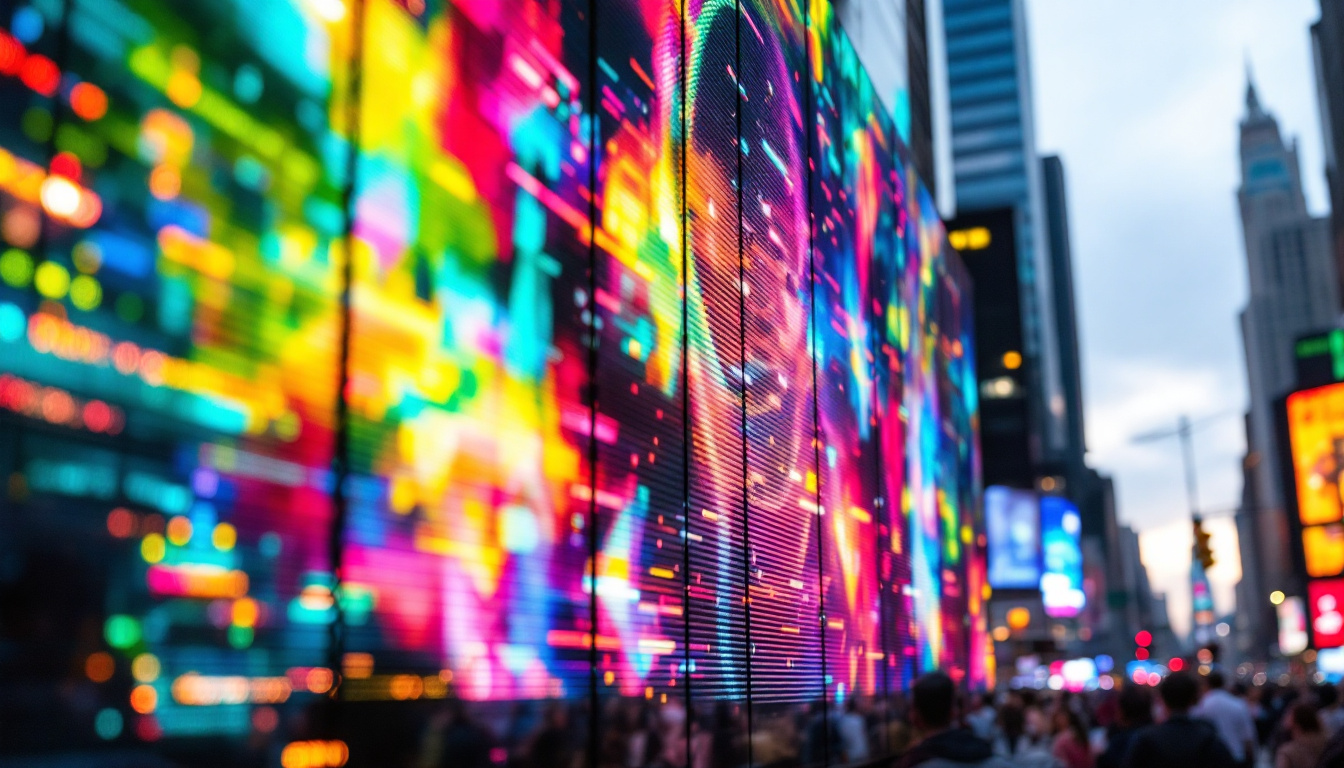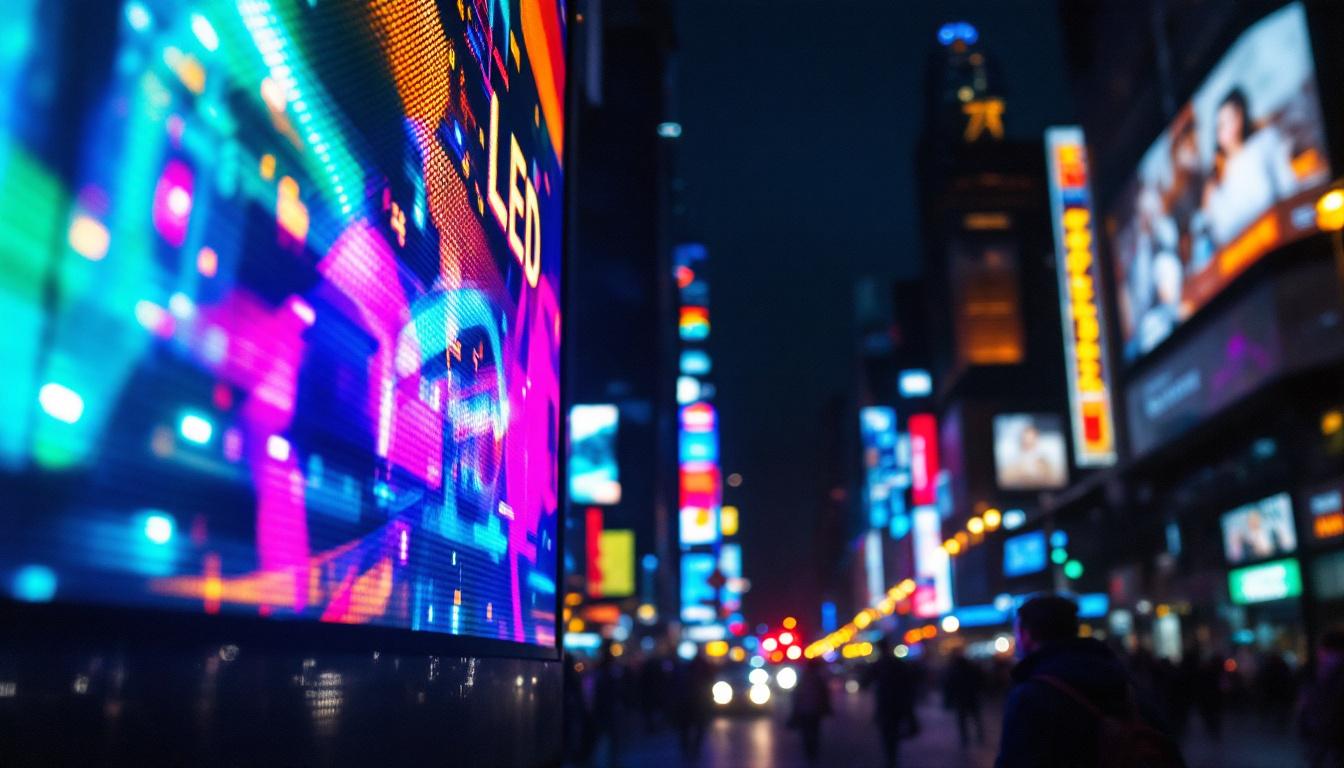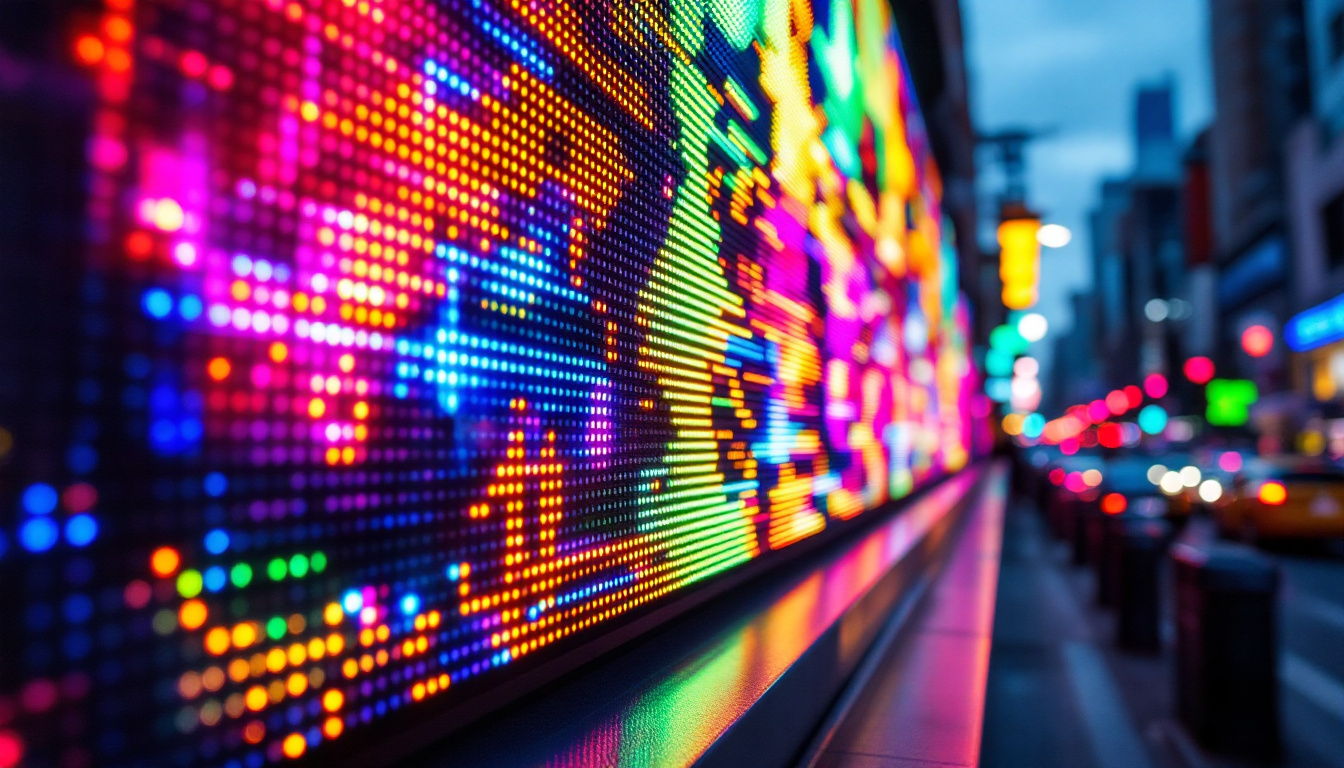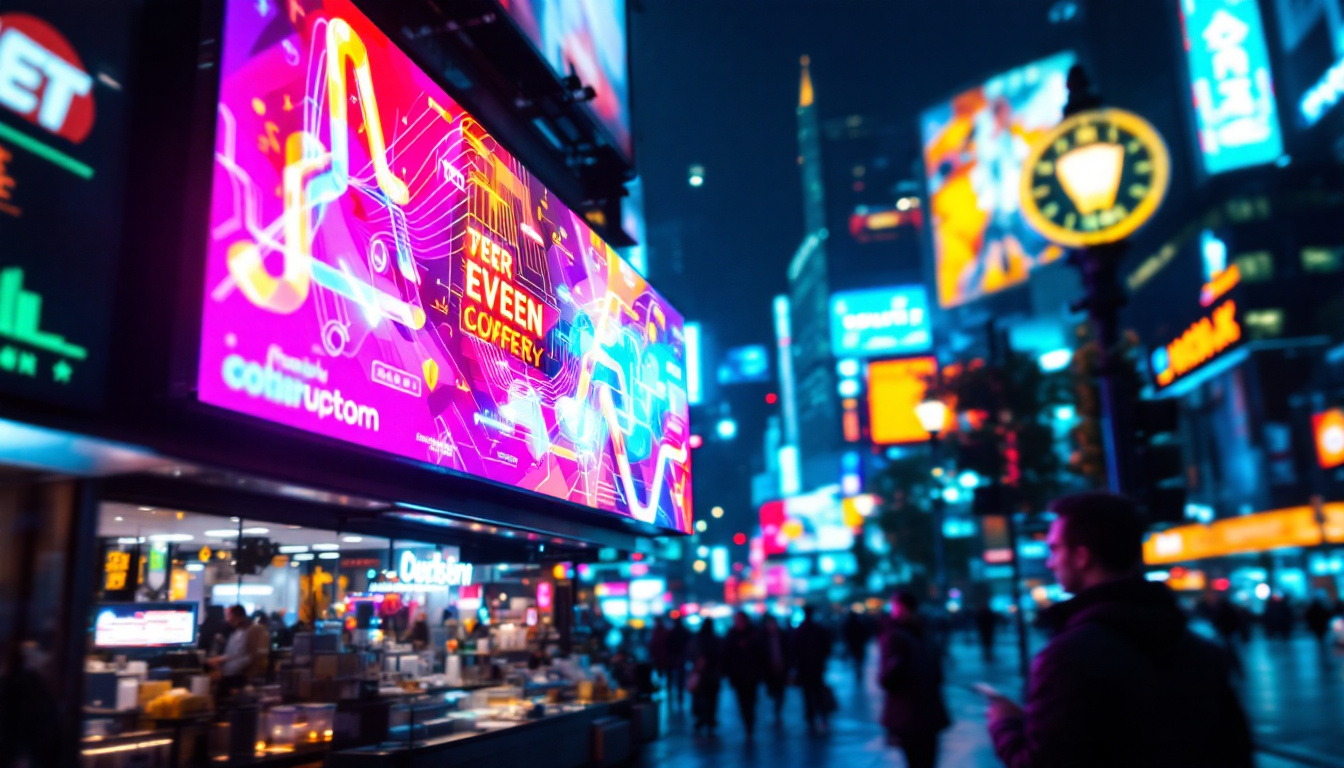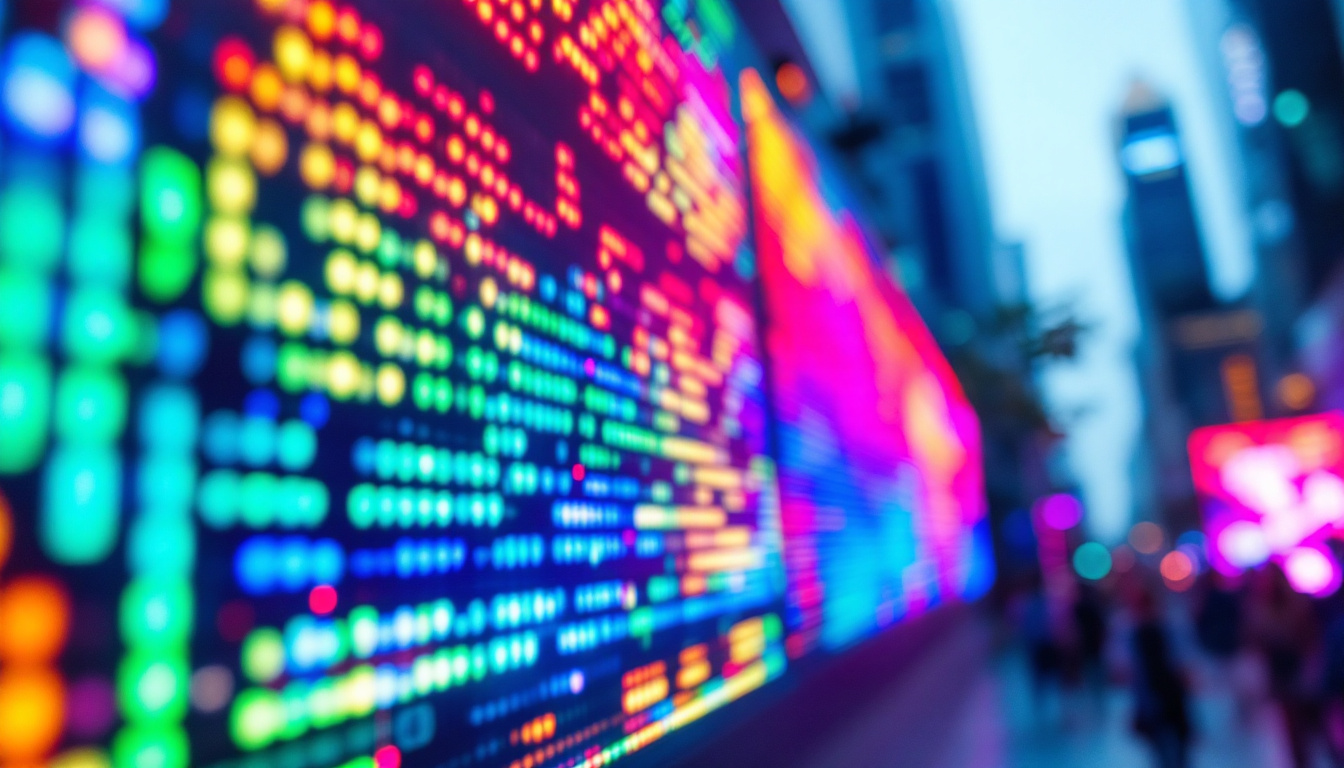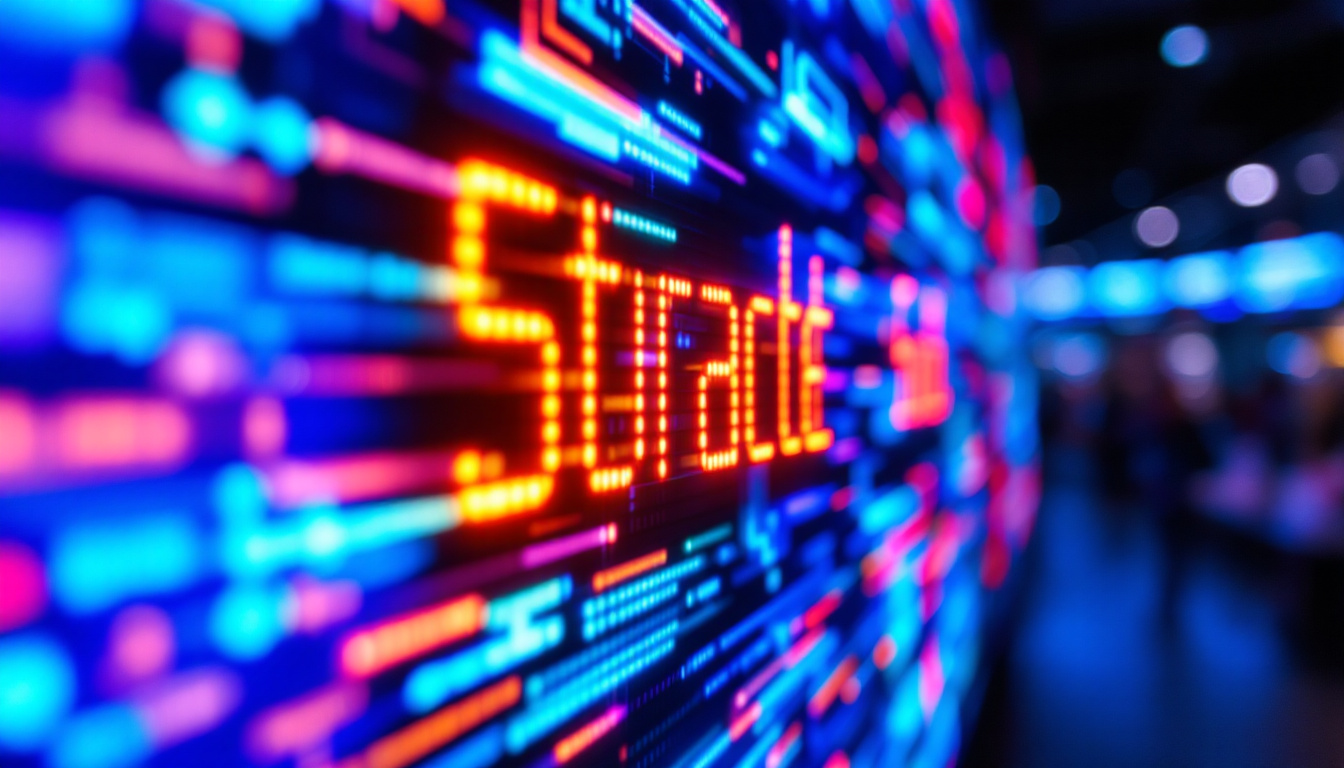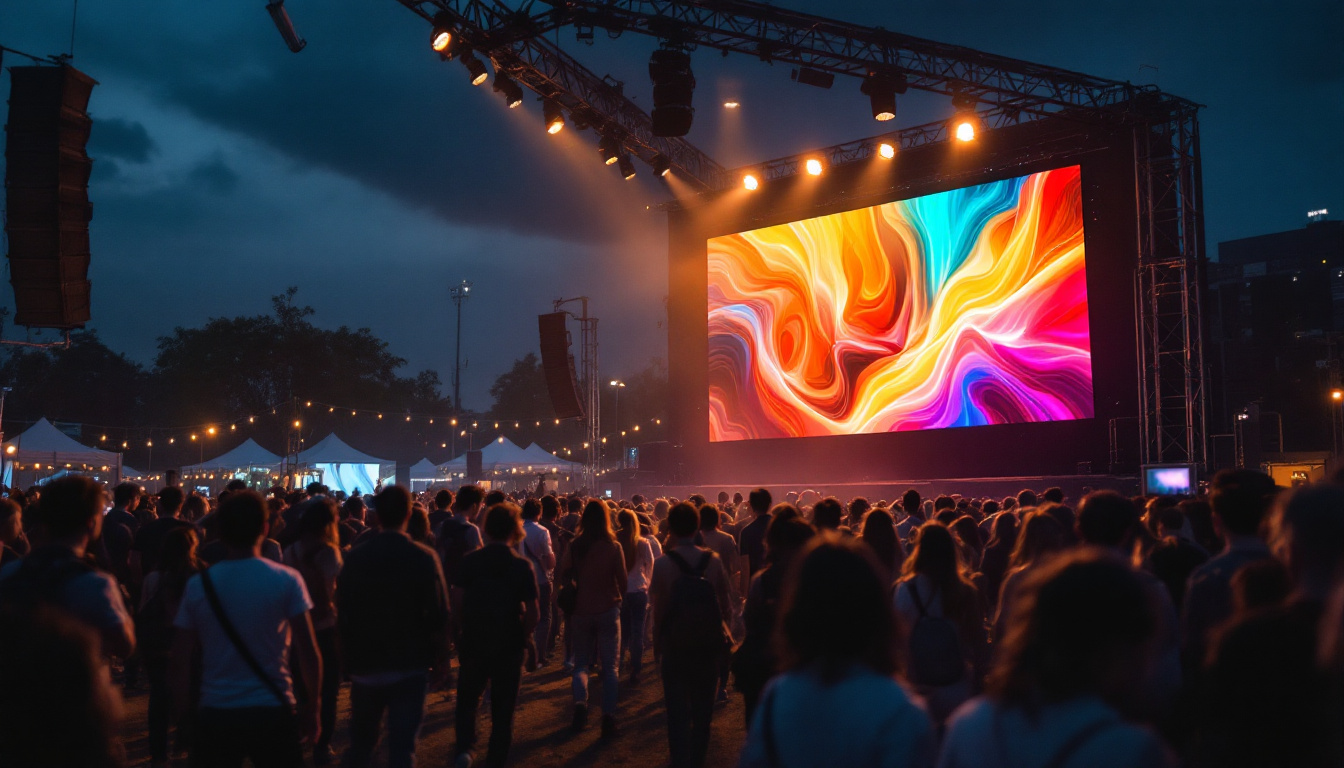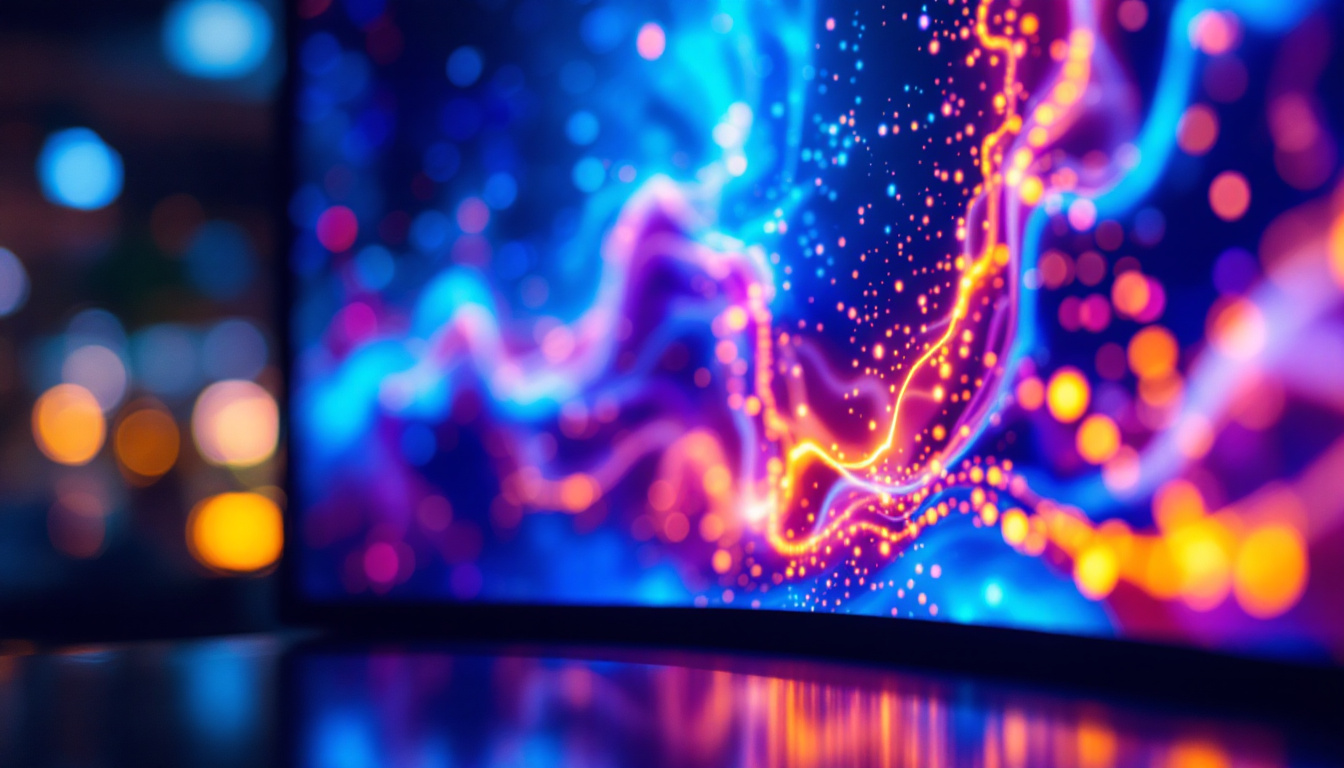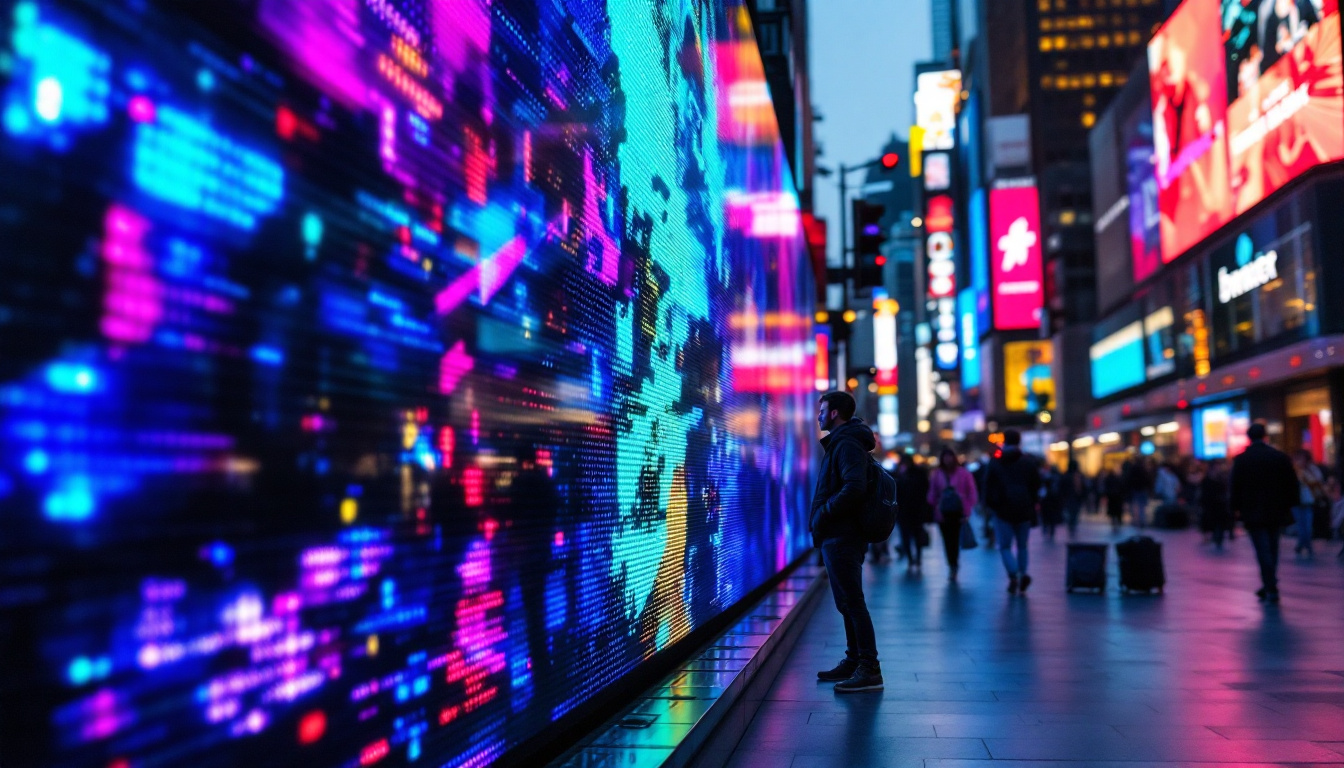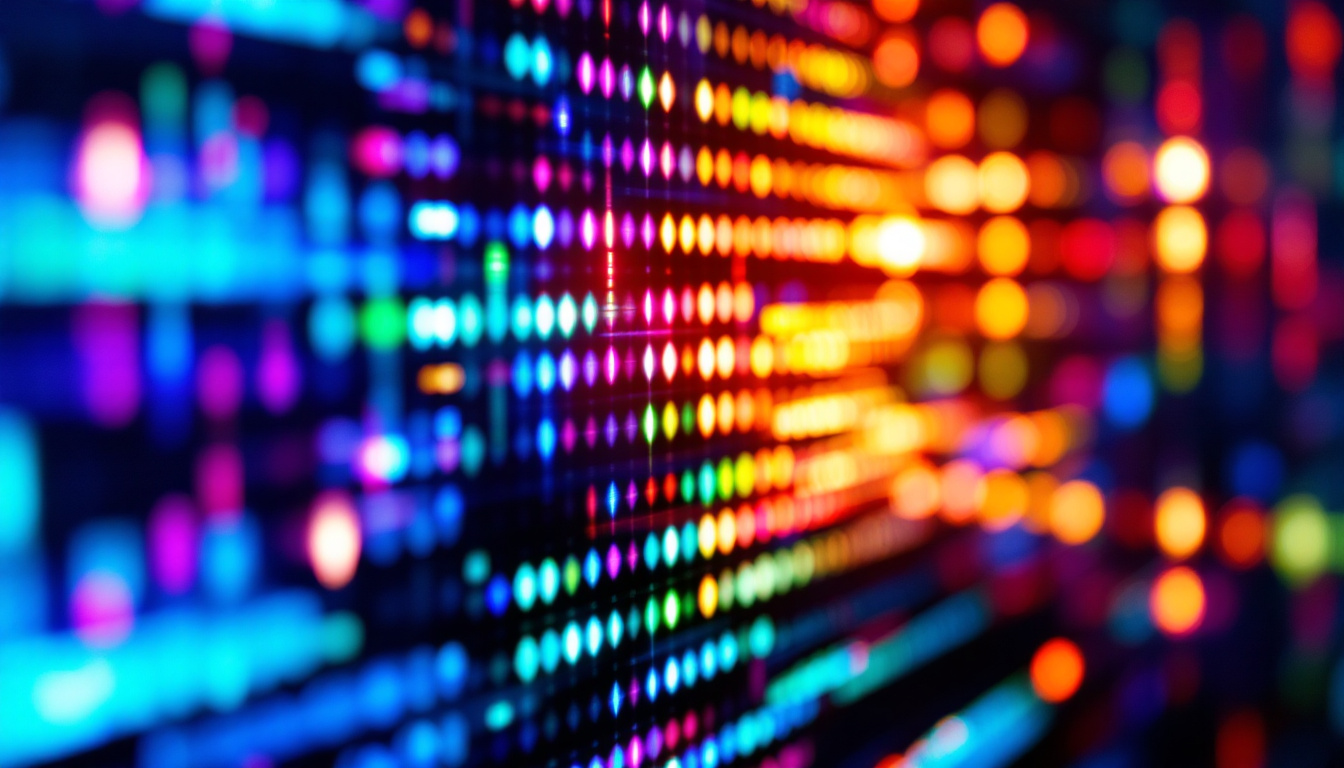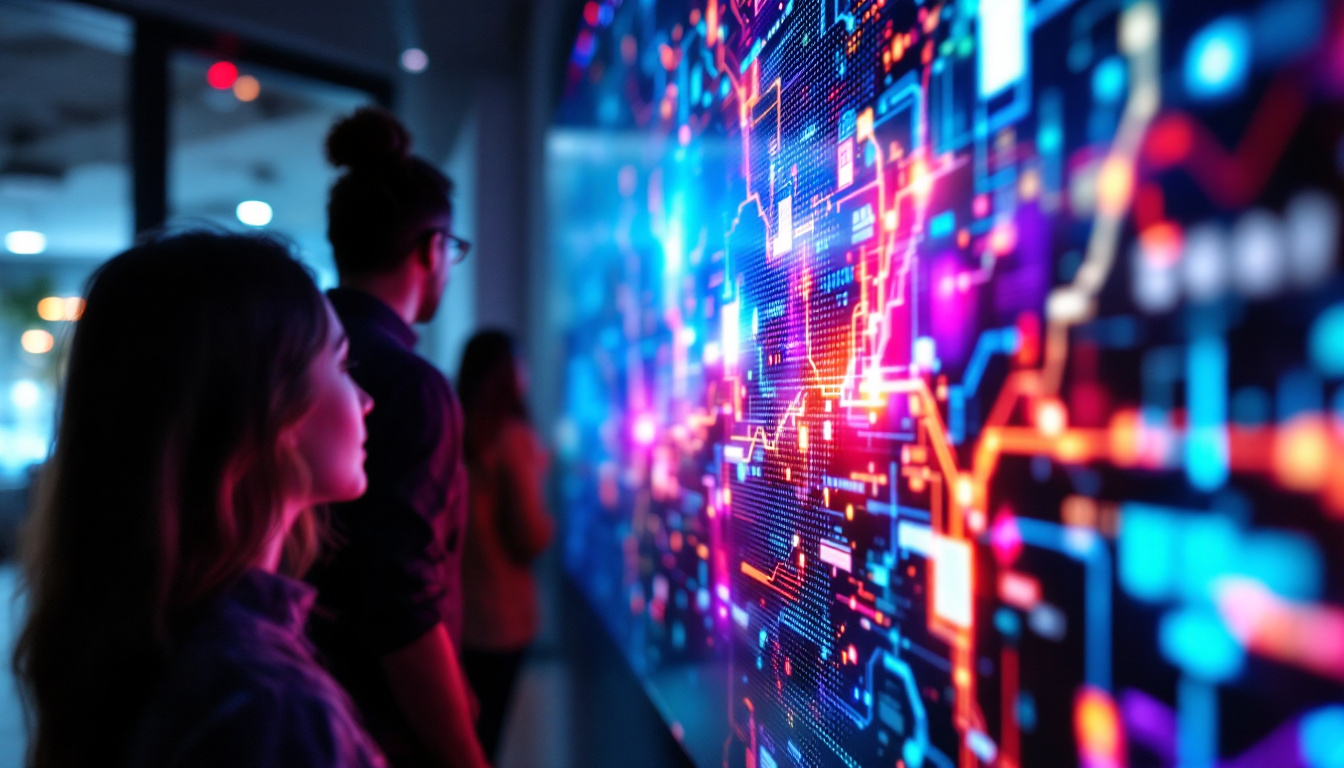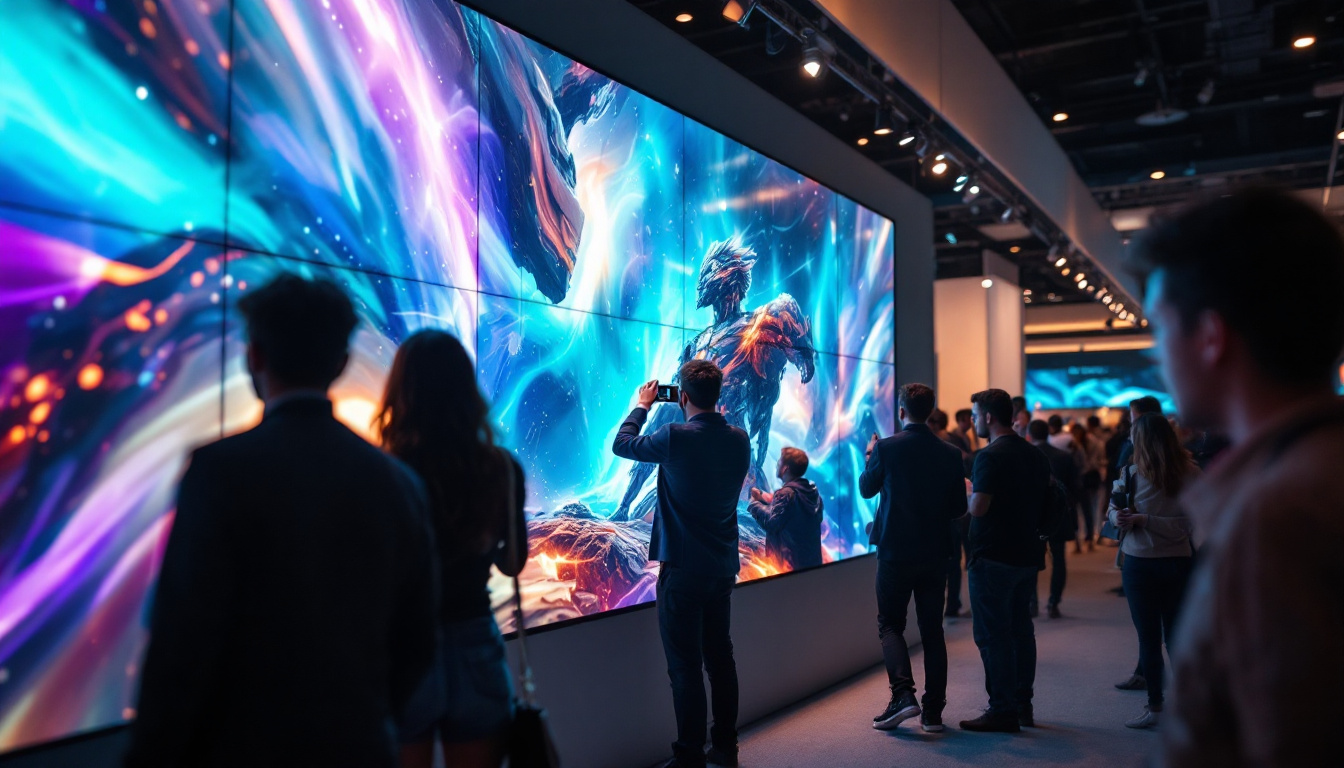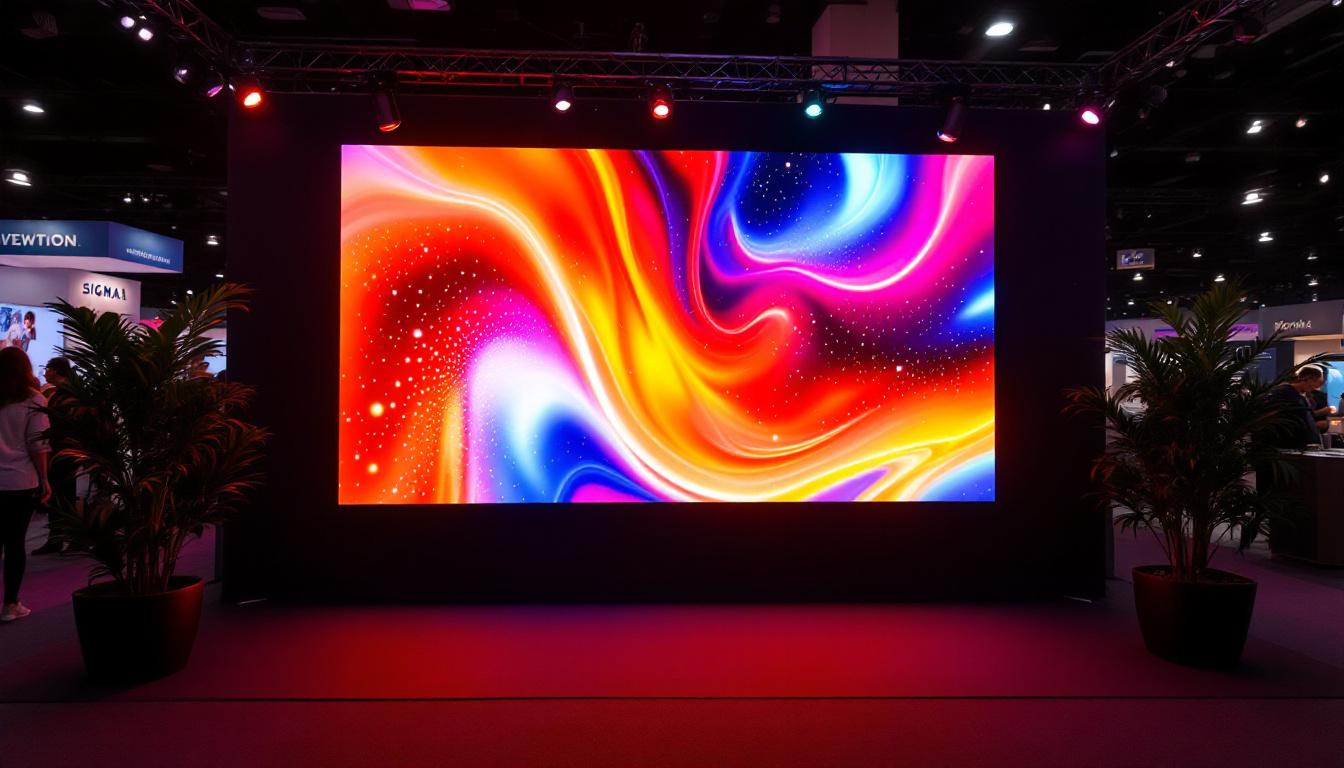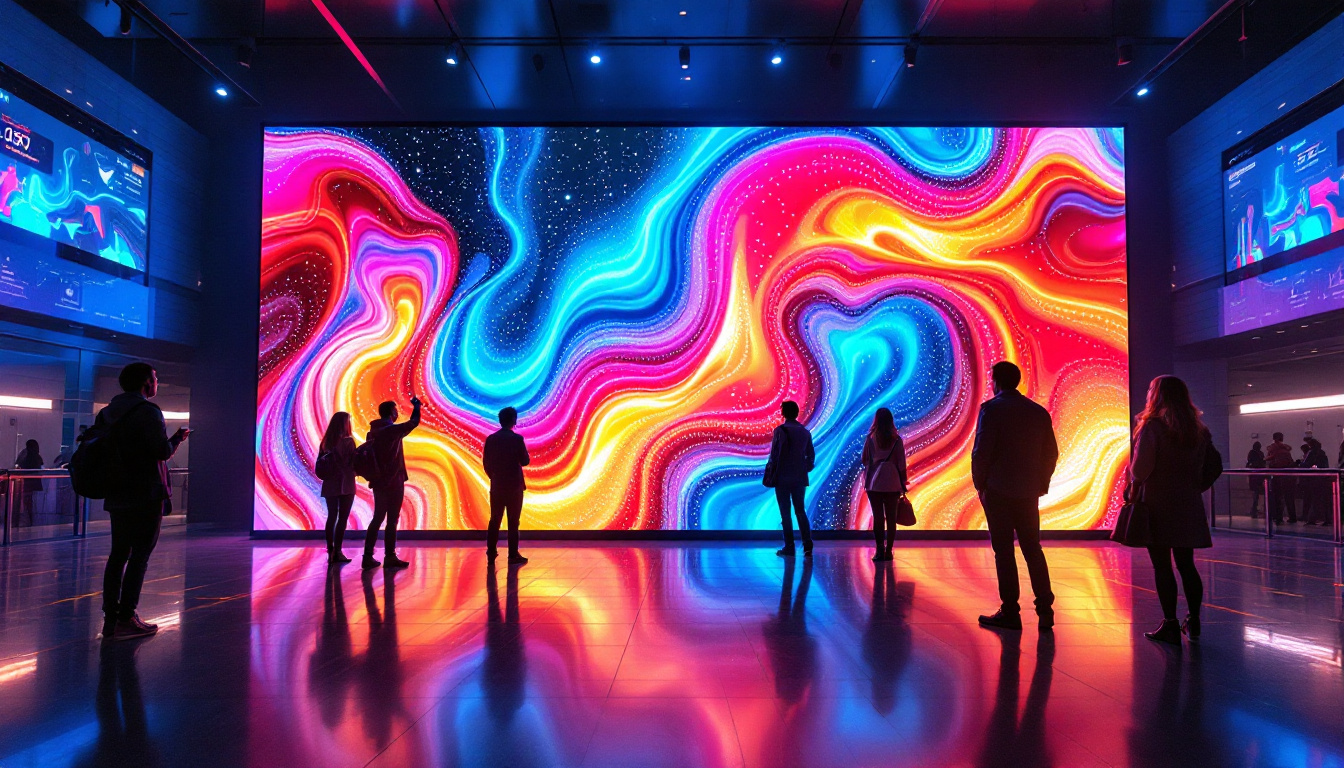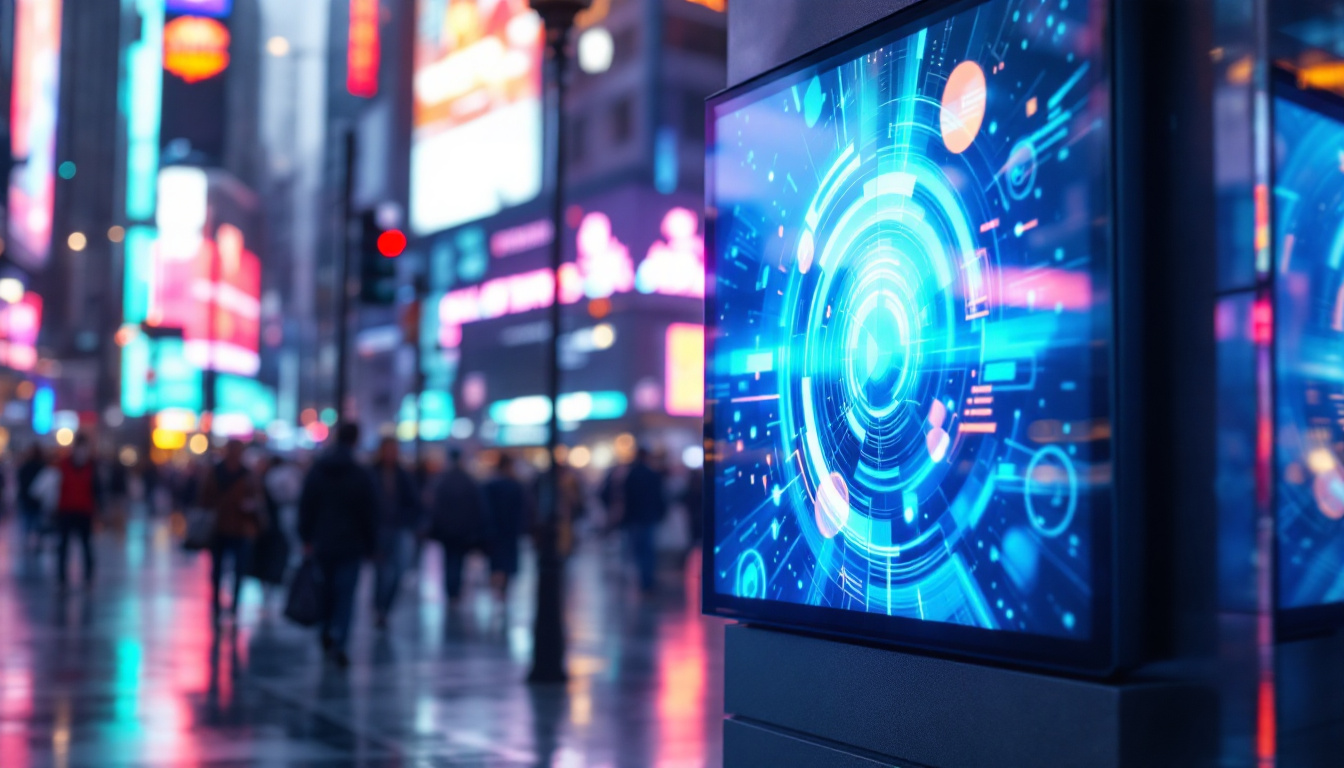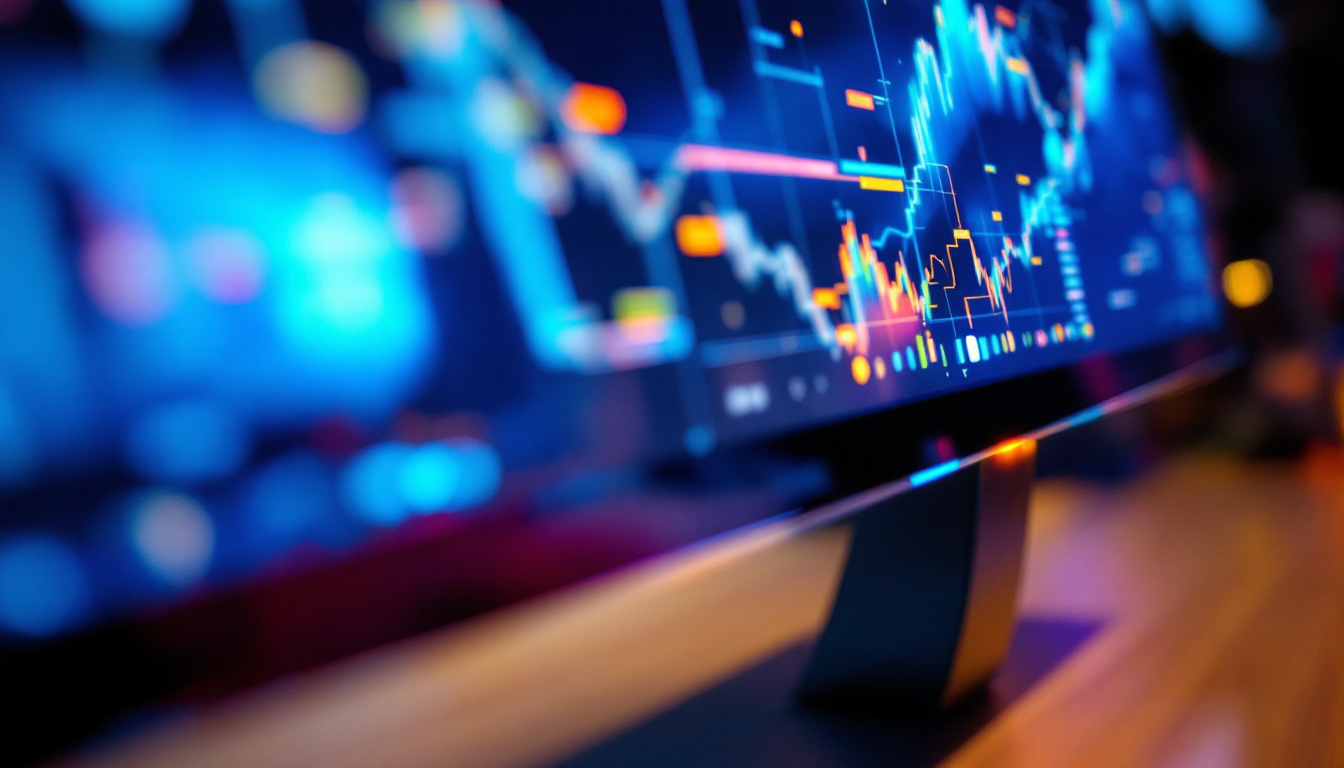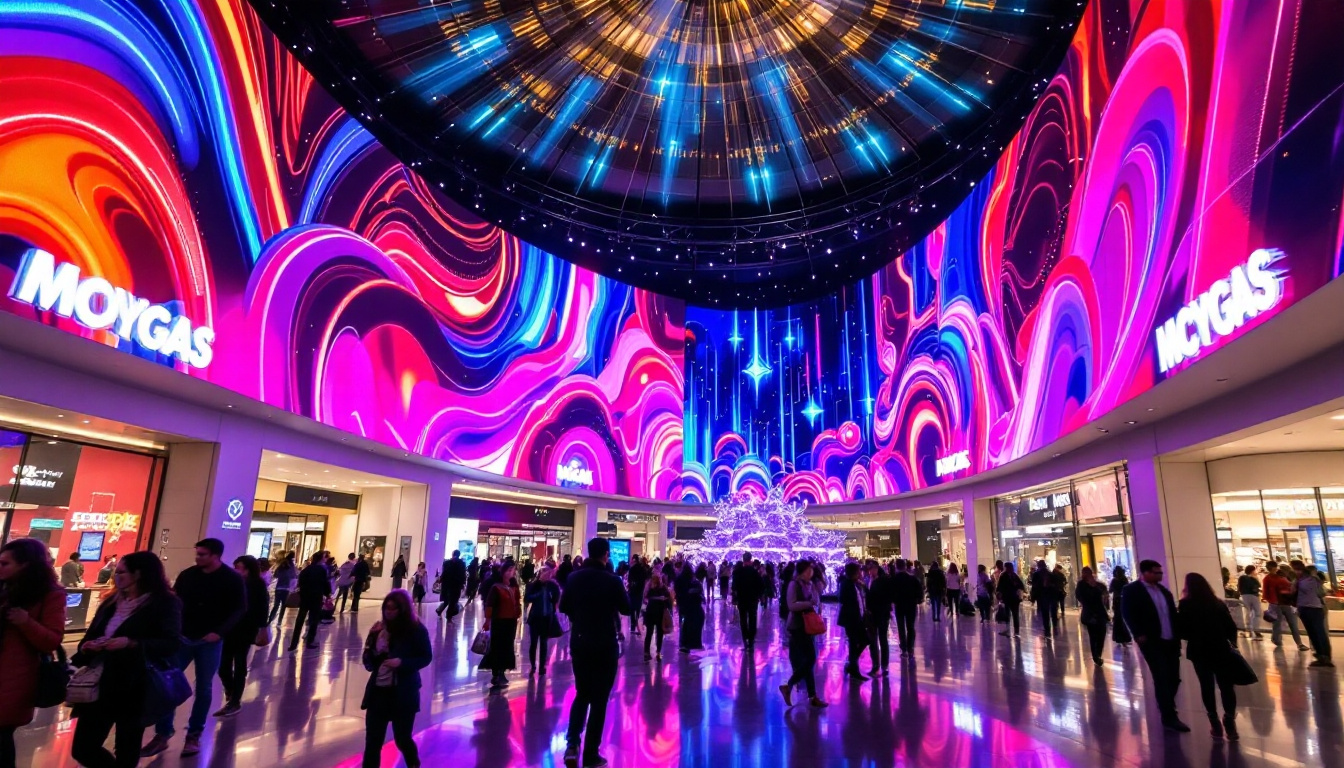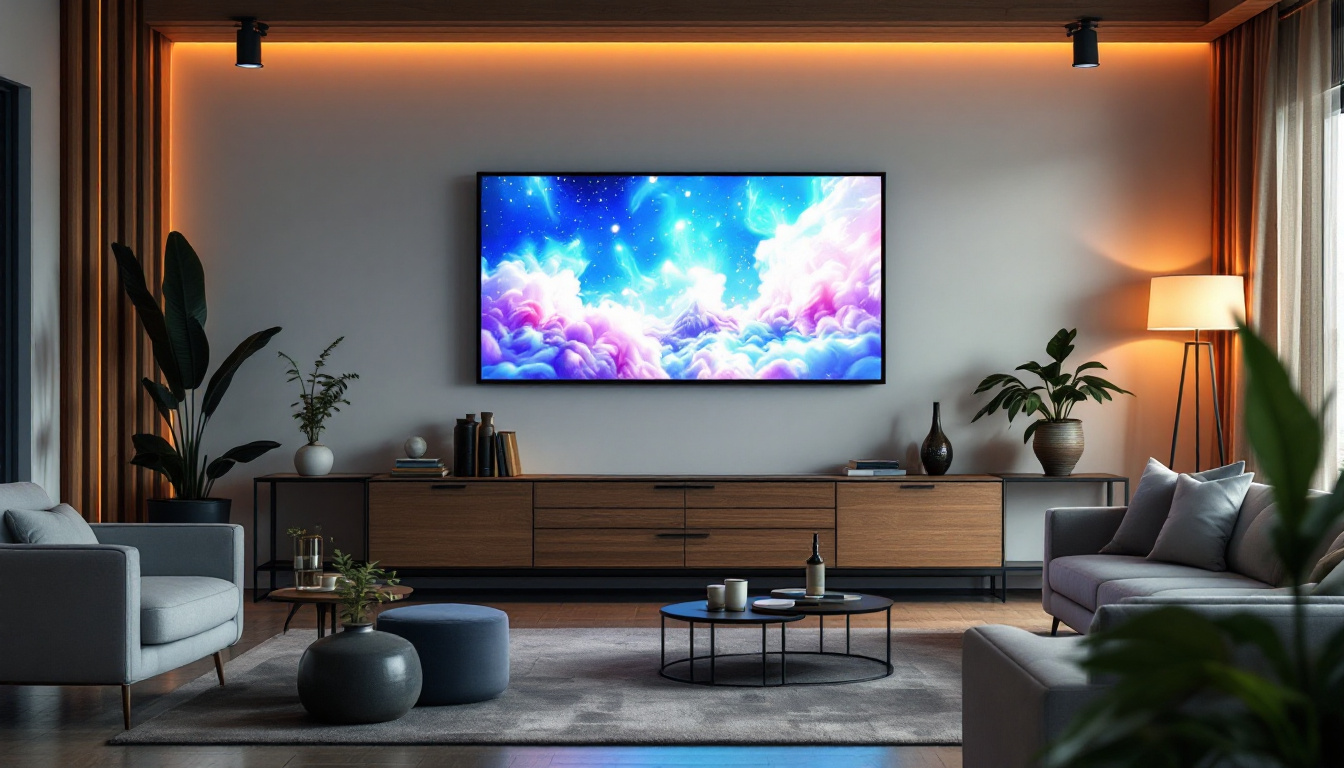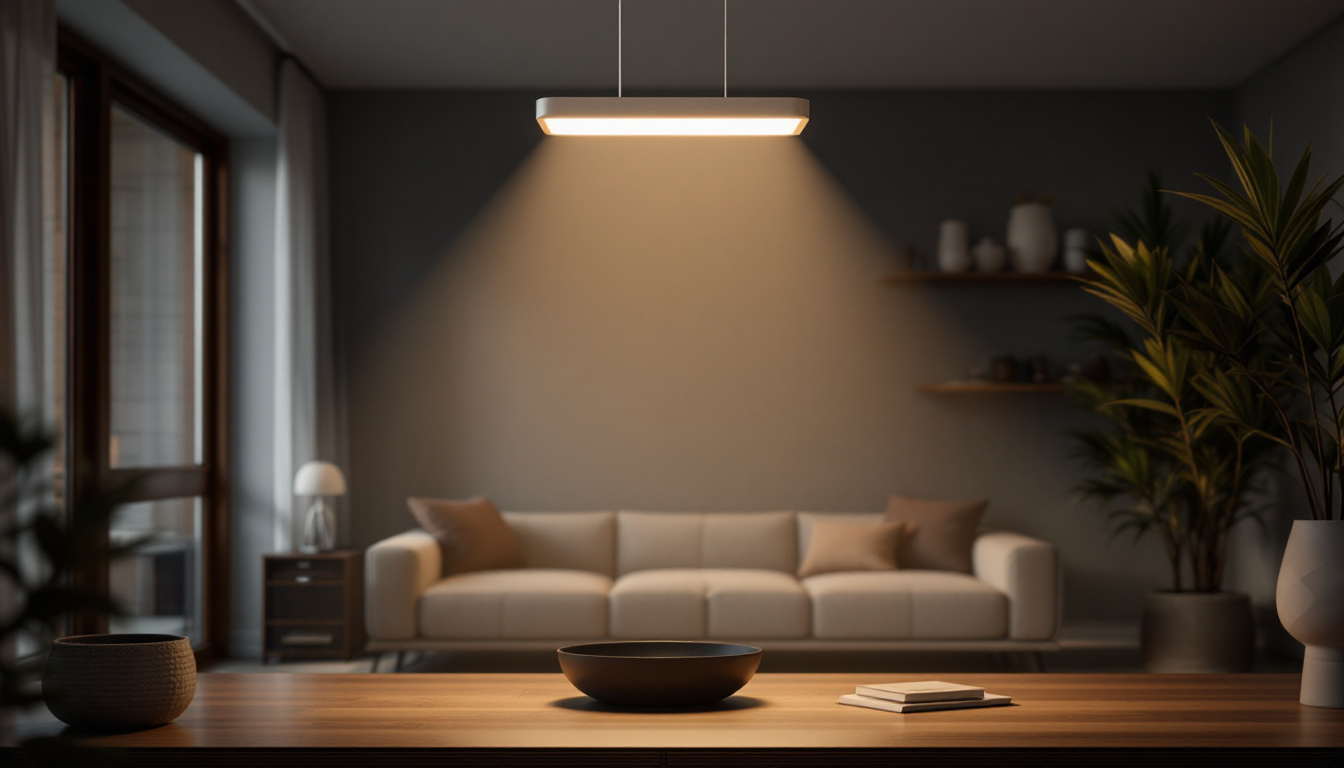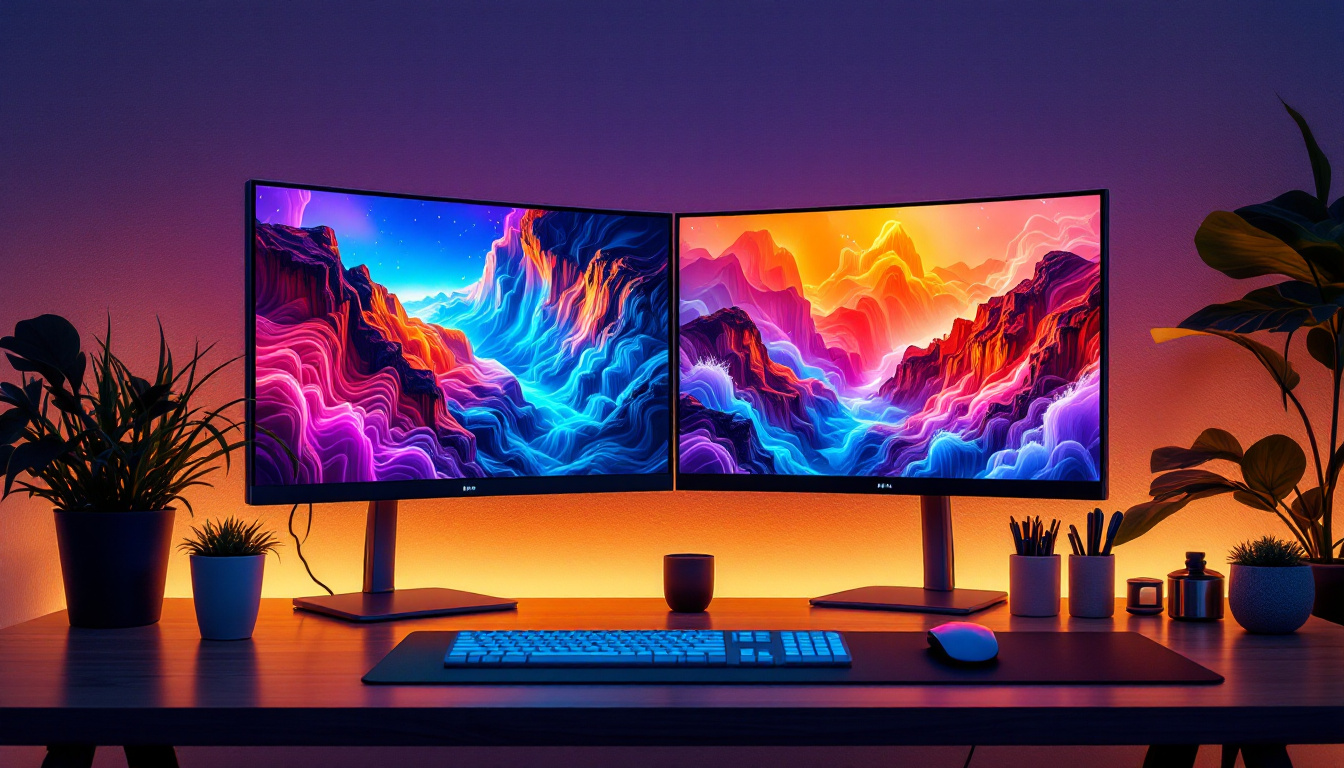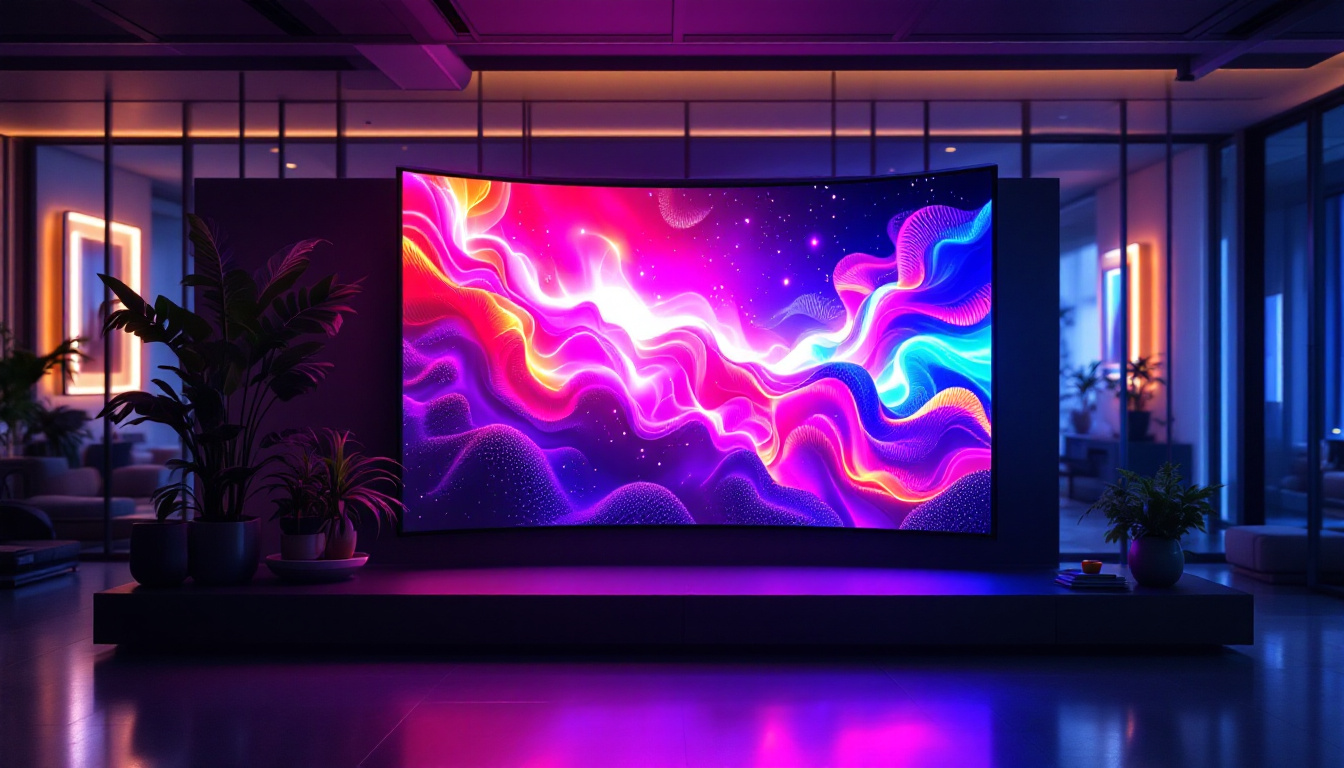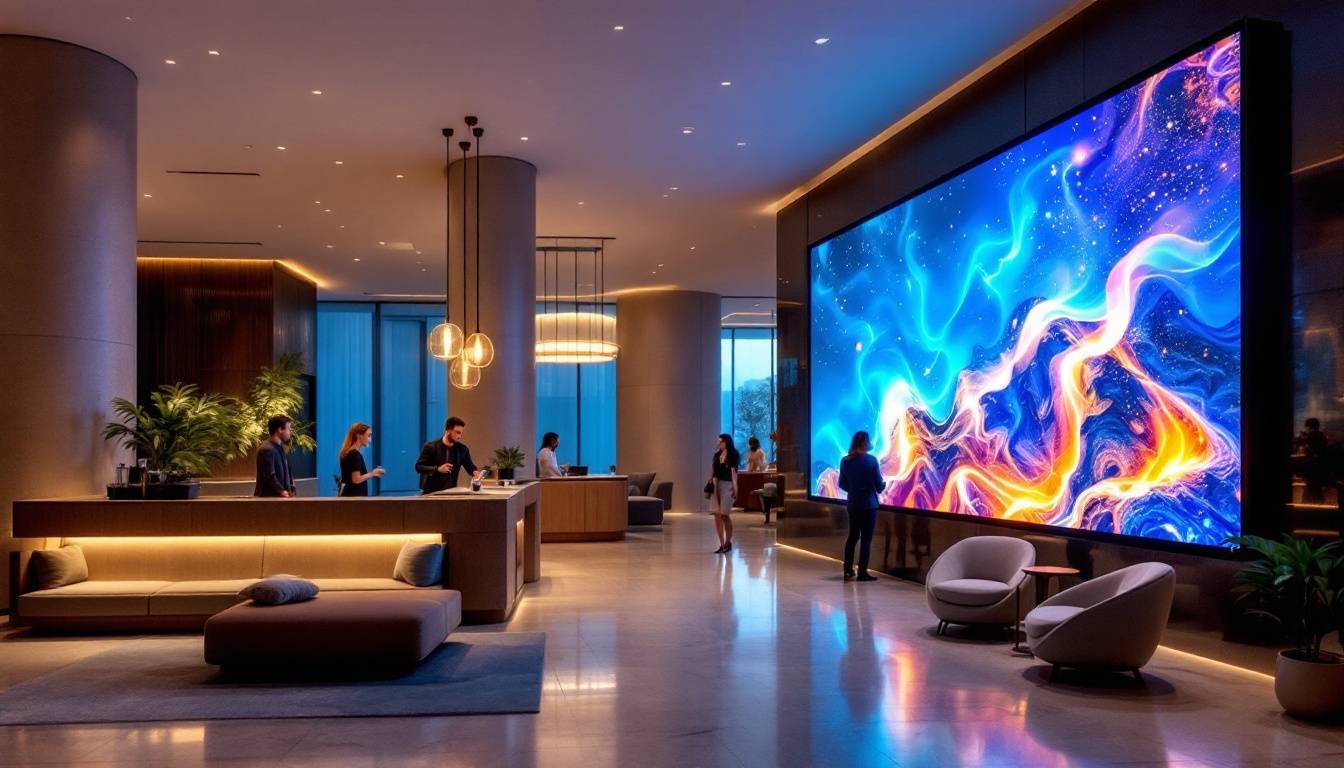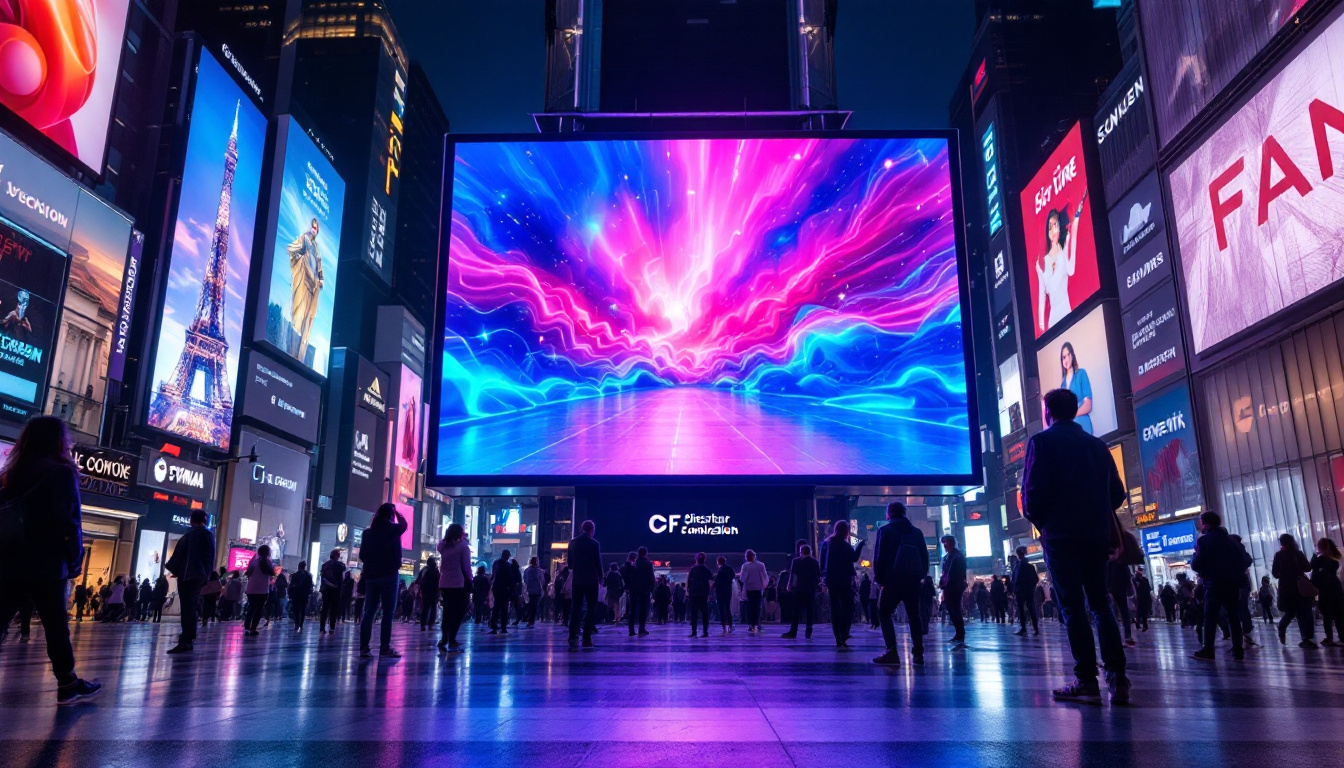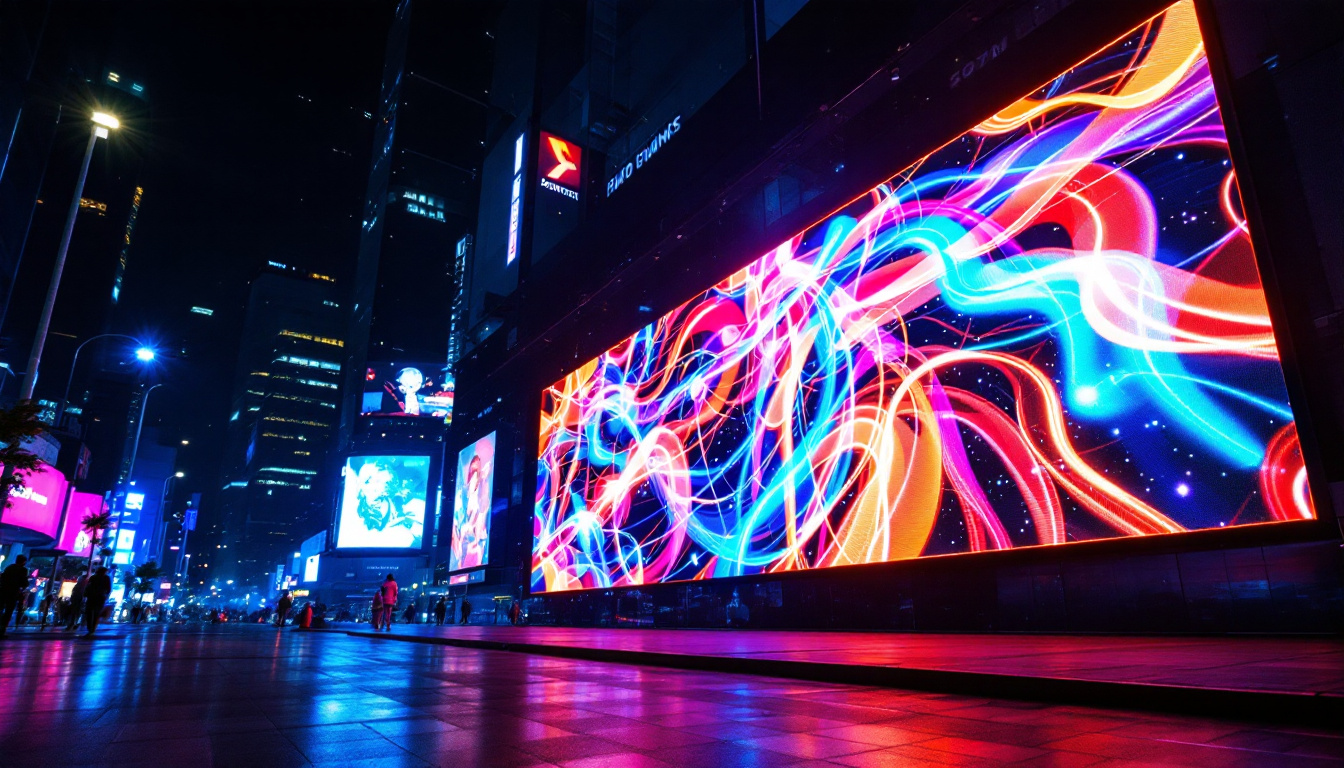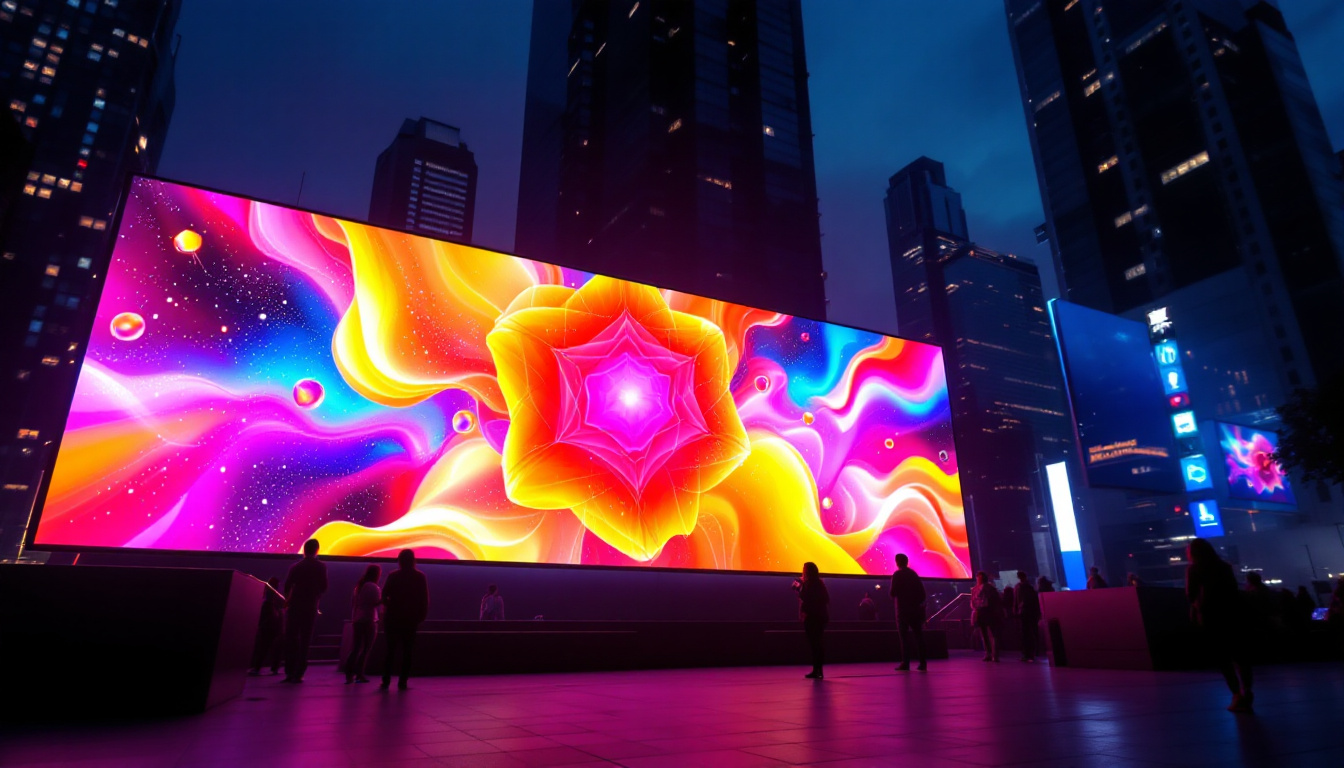Light Emitting Diodes (LEDs) have revolutionized the way we think about lighting and displays. From household bulbs to massive outdoor screens, LED technology has become ubiquitous in modern society. This article delves into the definition of LED lights, explores how LED displays work, and discusses their applications and advantages.
What are LED Lights?
LED lights are semiconductor devices that emit light when an electric current passes through them. Unlike traditional incandescent bulbs, which generate light through heat, LEDs produce light through electroluminescence, a process that involves the movement of electrons within a semiconductor material.
The Science Behind LEDs
At the core of an LED is a chip made from a combination of materials, typically gallium, arsenide, or gallium phosphide. When electricity flows through the chip, electrons recombine with holes (the absence of electrons) in the semiconductor, releasing energy in the form of photons. This phenomenon is what creates visible light.
The color of the light emitted by an LED is determined by the bandgap energy of the semiconductor material used. For instance, different materials can produce red, green, blue, or white light, allowing for a wide range of colors and applications. The ability to mix these colors also leads to the creation of RGB LEDs, which can produce millions of color combinations, making them popular for decorative lighting and displays.
Types of LED Lights
LED lights come in various forms, each designed for specific applications. Common types include:
- Standard LED Bulbs: Used in homes and offices, these bulbs replace traditional incandescent and fluorescent lights.
- LED Strip Lights: Flexible strips that can be cut to size, ideal for accent lighting and decorative purposes.
- High-Bay LED Lights: Used in commercial spaces with high ceilings, such as warehouses and gymnasiums.
- LED Displays: Used in televisions, billboards, and other digital signage.
In addition to these common types, there are specialized LED lights designed for specific tasks. For example, LED Grow Lights are tailored for indoor gardening and horticulture, providing the specific wavelengths of light that plants need for photosynthesis. These lights can simulate sunlight, promoting healthy growth and higher yields in controlled environments. Furthermore, Automotive LEDs are increasingly used in vehicle lighting systems, offering brighter illumination and greater energy efficiency compared to traditional halogen bulbs, which enhances both safety and aesthetics on the road.
Another fascinating aspect of LED technology is its integration with smart home systems. Smart LEDs can be controlled remotely via smartphones or voice assistants, allowing users to adjust brightness, color, and even set schedules for when lights should turn on or off. This level of control not only enhances convenience but also contributes to energy savings, as users can optimize their lighting usage based on their daily routines and preferences.
Understanding LED Displays
LED displays are a specific application of LED technology, designed to present visual information in a dynamic and engaging manner. These displays are made up of numerous tiny LEDs arranged in a grid, which can be controlled individually to create images, videos, and text.
How LED Displays Work
LED displays operate by controlling the brightness of each individual LED in the grid. This is achieved through a process called pulse-width modulation (PWM), which adjusts the amount of time each LED is turned on and off. By varying the intensity and duration of the light emitted, complex images and animations can be created.
There are two primary types of LED displays: direct view and backlit. Direct view displays use LEDs as the primary light source, while backlit displays use LEDs to illuminate an LCD panel. Direct view displays tend to offer better contrast and color accuracy, making them ideal for high-quality visual applications. Additionally, advancements in LED technology have led to the development of organic light-emitting diodes (OLEDs), which provide even greater flexibility and improved color reproduction, allowing for thinner and more energy-efficient displays.
Applications of LED Displays
LED displays are utilized across various sectors, including:
- advertising: Billboards and digital signage use LED technology to attract attention and convey messages effectively.
- Entertainment: Concerts and events often feature large LED screens to display visuals and enhance the audience experience.
- Transportation: LED displays are used in airports and train stations to provide real-time information about arrivals and departures.
Moreover, LED displays are making significant inroads in the field of education. Many schools and universities are adopting LED screens for classrooms and auditoriums, providing a vibrant medium for presentations and interactive learning. The ability to display high-resolution images and videos helps in engaging students more effectively than traditional chalkboards or projectors. Furthermore, the durability and low power consumption of LED technology make it a cost-effective solution for educational institutions looking to modernize their teaching environments.
In the realm of sports, LED displays have transformed the way fans experience games. Stadiums and arenas now utilize large LED screens to showcase live action, replays, and advertisements, creating an immersive atmosphere that enhances spectator enjoyment. These displays can also be synchronized to deliver real-time statistics and player information, keeping fans informed and engaged throughout the event. As technology continues to evolve, we can expect even more innovative applications of LED displays in various fields, pushing the boundaries of visual communication.
Advantages of LED Technology
LED lights and displays offer numerous advantages over traditional lighting and display technologies. These benefits contribute to their increasing popularity in both residential and commercial applications.
Energy Efficiency
One of the most significant advantages of LED technology is its energy efficiency. LEDs consume significantly less power compared to incandescent or fluorescent lights, translating to lower electricity bills and a reduced carbon footprint. This efficiency is particularly beneficial in large installations, such as street lighting or commercial buildings. Moreover, the ability of LEDs to produce more lumens per watt means that they can provide the same brightness as traditional bulbs while using a fraction of the energy, allowing for substantial savings in energy costs over time.
Longevity and Durability
LEDs have an impressive lifespan, often lasting up to 25,000 hours or more. This longevity reduces the frequency of replacements, making LEDs a cost-effective solution over time. Additionally, LEDs are more durable than traditional bulbs, as they are resistant to shock and vibration, making them suitable for various environments. This durability is particularly advantageous in outdoor applications where exposure to the elements can shorten the lifespan of other lighting options. Furthermore, the solid-state technology of LEDs means they are less likely to fail suddenly, providing consistent performance and reliability.
Environmental Impact
LED technology is more environmentally friendly than traditional lighting options. LEDs do not contain hazardous materials like mercury, which is found in some fluorescent bulbs. Furthermore, their energy efficiency contributes to lower greenhouse gas emissions, making them a sustainable choice for the future. In addition to these benefits, the reduced need for frequent replacements means fewer bulbs end up in landfills, further minimizing their environmental footprint. As cities and communities strive for greener initiatives, the adoption of LED technology plays a crucial role in achieving sustainability goals and promoting cleaner urban environments.
Versatility and Design Flexibility
Another remarkable advantage of LED technology is its versatility and design flexibility. LEDs can be easily integrated into a wide range of applications, from architectural lighting to intricate decorative displays. Their compact size allows for creative designs that were previously impossible with traditional lighting options. For instance, LED strips can be used to create ambient lighting in homes, while large LED screens can be utilized for advertising or entertainment in public spaces. This adaptability not only enhances aesthetic appeal but also opens up new possibilities for innovative lighting solutions in various settings.
Instant Lighting and Dimming Capabilities
LEDs provide instant illumination without the warm-up time associated with some fluorescent lights, making them ideal for situations where immediate lighting is necessary. Additionally, they offer excellent dimming capabilities, allowing users to adjust brightness levels according to their needs. This feature not only enhances comfort but also contributes to energy savings, as dimming lights can significantly reduce power consumption. The ability to control lighting with precision further enhances the user experience, making LEDs a preferred choice for both residential and commercial spaces where ambiance and functionality are key considerations.
Challenges and Considerations
While LED technology offers numerous benefits, there are also challenges and considerations that users should be aware of. Understanding these factors can help in making informed decisions when choosing LED products.
Initial Cost
The initial cost of LED lights and displays can be higher than traditional options. However, this upfront investment is often offset by long-term savings on energy bills and maintenance costs. It is essential to consider the total cost of ownership rather than just the initial purchase price.
Color Quality and Temperature
LEDs can vary in color quality and temperature, which may not always meet specific requirements for certain applications. It is crucial to select LEDs with the appropriate color rendering index (CRI) and color temperature to ensure that the desired visual effect is achieved.
Future of LED Technology
The future of LED technology appears bright, with ongoing advancements and innovations. As research continues, new applications and improvements in efficiency, color quality, and functionality are expected.
Smart LED Solutions
With the rise of smart home technology, LED lights are increasingly being integrated into smart systems. These solutions allow users to control lighting remotely, set schedules, and even adjust color temperatures based on personal preferences or time of day.
Advancements in Display Technology
In the realm of displays, innovations such as microLED and organic LED (OLED) technologies are emerging. These advancements promise even higher resolutions, better color accuracy, and more flexible display options, paving the way for the next generation of visual experiences.
Conclusion
LED lights and displays have transformed the landscape of lighting and visual communication. With their energy efficiency, longevity, and versatility, they are proving to be a sustainable choice for the future. As technology continues to evolve, the potential applications and benefits of LED technology are likely to expand, making it an essential component of modern life.
Understanding the definition and workings of LED lights and displays not only highlights their importance but also encourages informed decision-making when it comes to lighting solutions. As society moves towards more energy-efficient and environmentally friendly practices, LED technology stands at the forefront of this transition.
Explore the Future of Visual Communication with LumenMatrix
As you embrace the sustainable and versatile world of LED technology, take your visual experience to the next level with LumenMatrix. Our commitment to innovation in LED display modules means your message is not just seen, but truly experienced. From captivating Indoor and Outdoor LED Wall Displays to dynamic Vehicle and Sports LED Displays, LumenMatrix offers a comprehensive range of solutions tailored to your unique needs. Discover how our state-of-the-art LED Poster, Floor, Custom, All-in-One, and Transparent Displays can revolutionize your brand’s visibility and audience engagement. Check out LumenMatrix LED Display Solutions today and be a part of the visual revolution.

